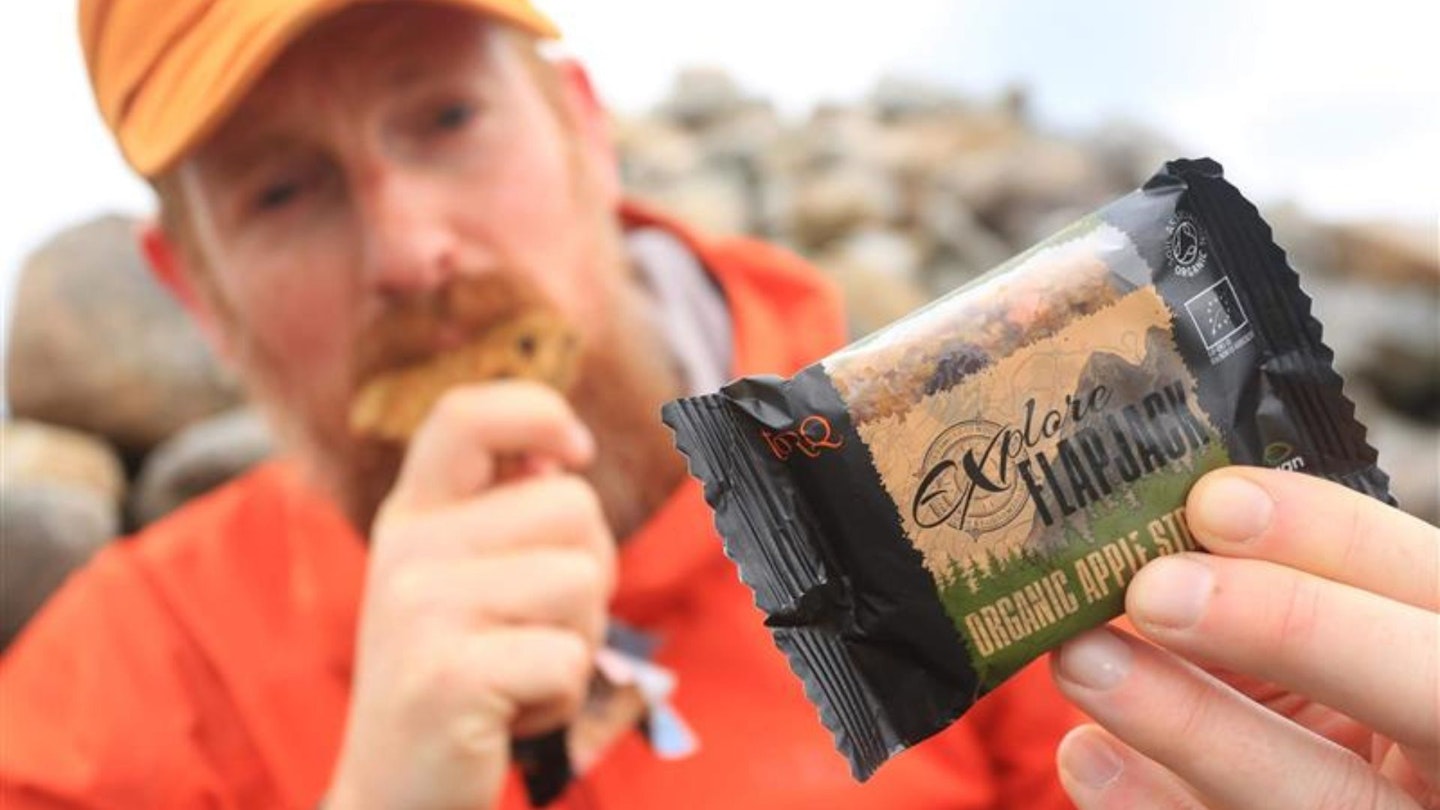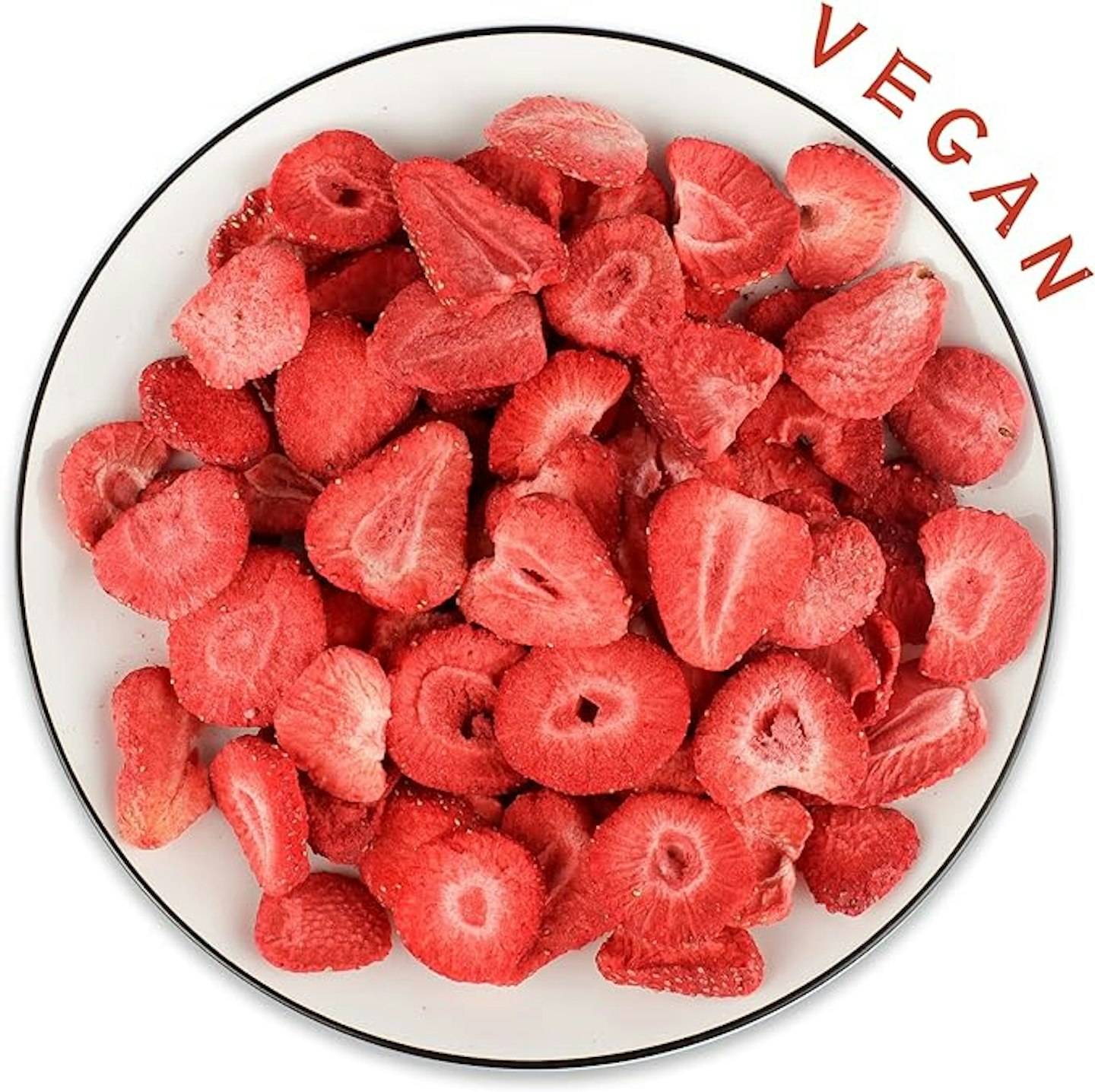Lots of people hike for the health benefits of exercise. Lots of people hike for the joy of being in nature. Lots of people hike because it’s an excuse to get away from the never-ending peril of laundry. Some people (ahem) hike simply because food tastes better outside and it's a ready-made excuse to eat as much as humanly possible. But no matter your reason for going, everyone needs to fuel up - so with that in mind, what is the ultimate hiking snack to put in your rucksack to achieve peak chew with a peak view?
Hiking snacks is a loosely defined category of food. Of course, anything can be a hiking snack if it’s wrapped in foil or in a ziplock bag: we’ve tried everything from leftover roast parsnips to a whole wheel of brie. But as they say, variety is the spice of life, so choosing a wide range of different snacks for your day is our toppest of top tips here.
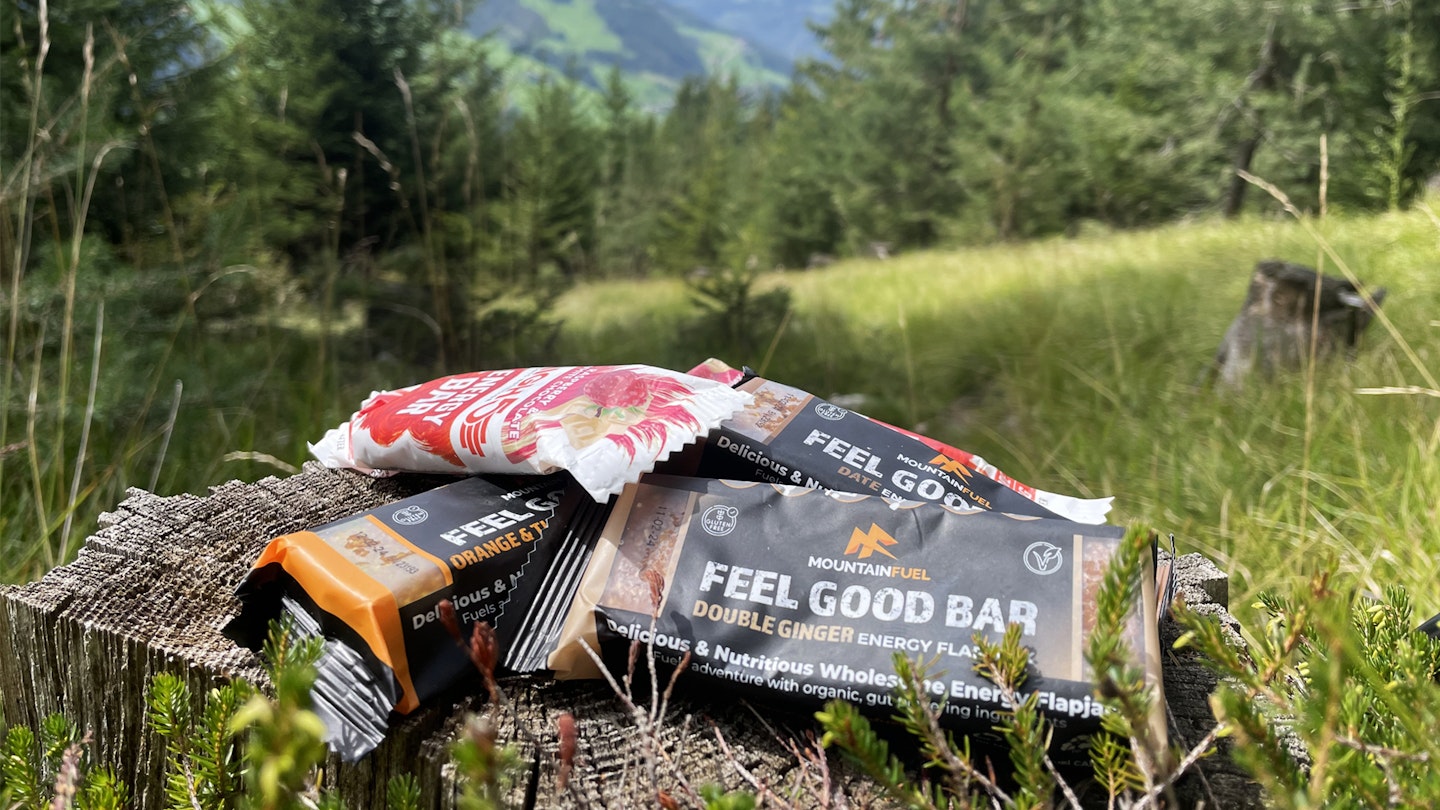
But, going into more detail that that which options should make up your selection platter of ultimate hiking snacks? Should you take trail mix like it’s still 1993 and be left with a sad pile of raisins at the bottom of your bag? Should we even entertain the idea of eating something savoury, other than your lunchtime sandwich?
To answer all these questions, we’ve rounded up exactly what the team from Trail and LFTO like to take with them on the hill. The following guide to the ultimate hiking snacks you can take with you to fuel your adventures: a mix of carbs, fat, fibre, protein and yes, of course - sugar.
Granola bars and flapjacks

For most of us, the first thing that’ll spring to mind when we think of hiking snacks is a granola bar - plain and simple. They’re kind of a boring choice, but we love how convenient they are to just slip into a pocket, not to mention the bang for your buck you get when it comes to energy per gram. The trick we’ve found with granola bars is to mix them up. We like to buy a few packets in bulk, then take different ones with us for each day - because there’s not much worse than getting bored of a bar, then realising you’ve got to eat four more of them before you get home.
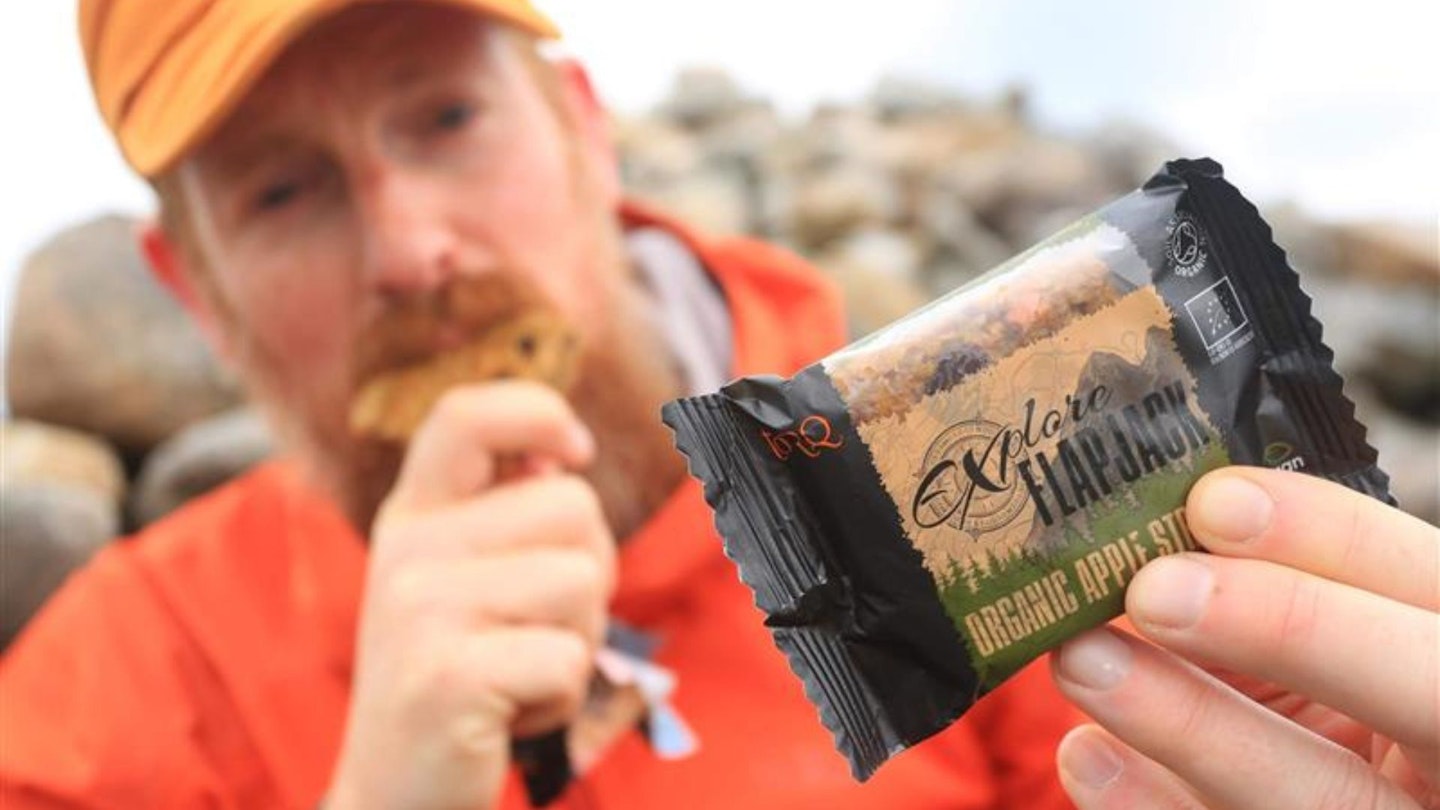
Our favourite brands on the trail team include Brunch Bars, Nature Valley protein bars and Eat Natural Bars. They're our top choices, whittled down after decades of "research", and we love them because they're tasty, easy to eat (even in winter), and provide a fair balance of nutrients. We’ve always found that having something with oats, or nuts or a grain keeps us going for longer than the simple sugar-rush of a dried fruit bar such as NAKD, but for running, something with a faster energy release is great. Check out our best running bars article here.
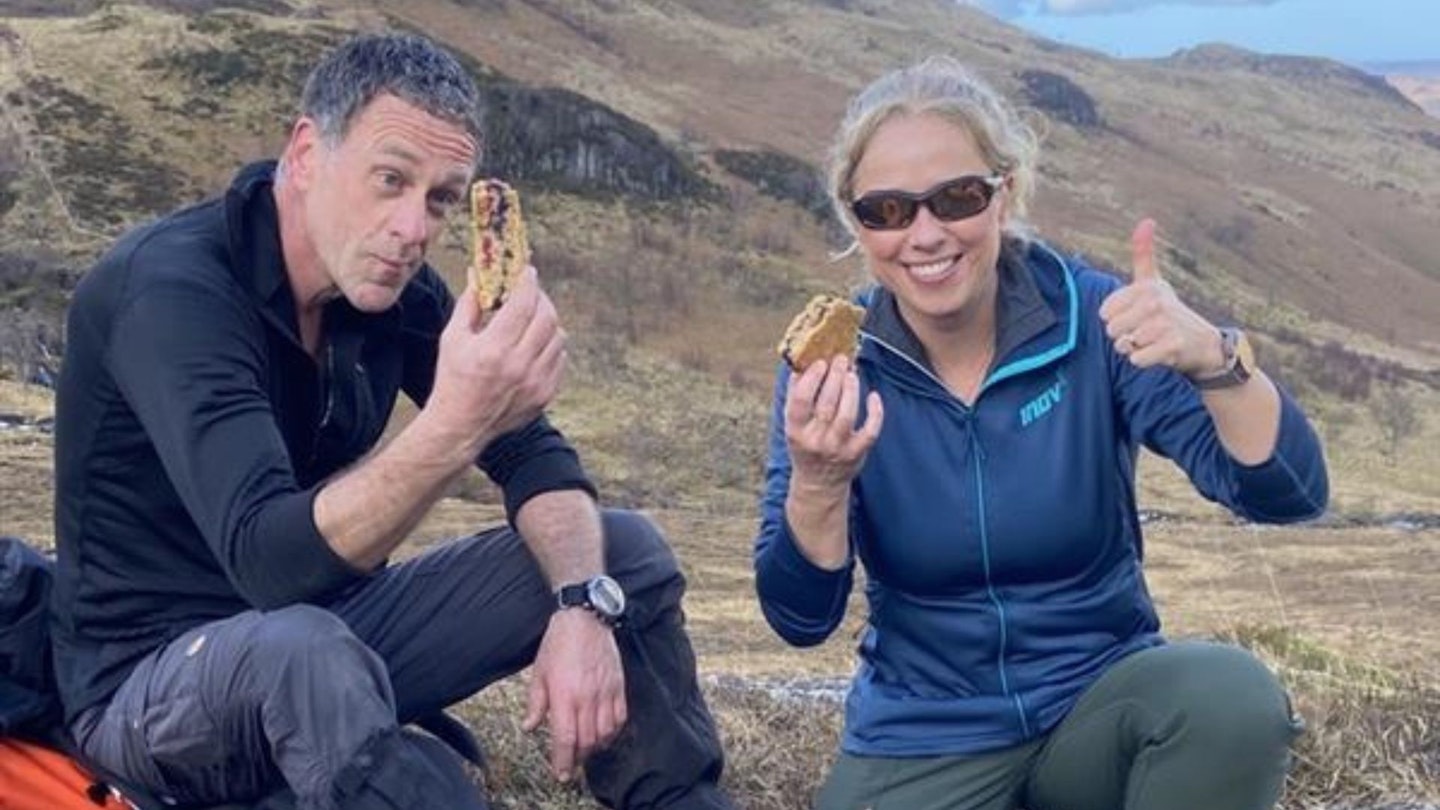
But here to upstage granola bars on every front is the flapjack; preferably a homemade one. Flapjacks are oats glued together with syrup and butter: in nutritional terms, that’s fat, fibre, and both fast-release and slow-release carbs. In non-nutritional terms, that's delicious. Make it go further by adding seeds and nuts to your flapjack, and then coating the whole thing in chocolate for good luck (winter only, chocolate flapjacks are a disaster in the warmer months!).
When you really get into it, you can play around with chew vs crunch, and mix it up when it comes to flavour combos. There’s nothing better than a homemade summit flapjack - promise. Here’s a great recipe to start you off.
Trail mix
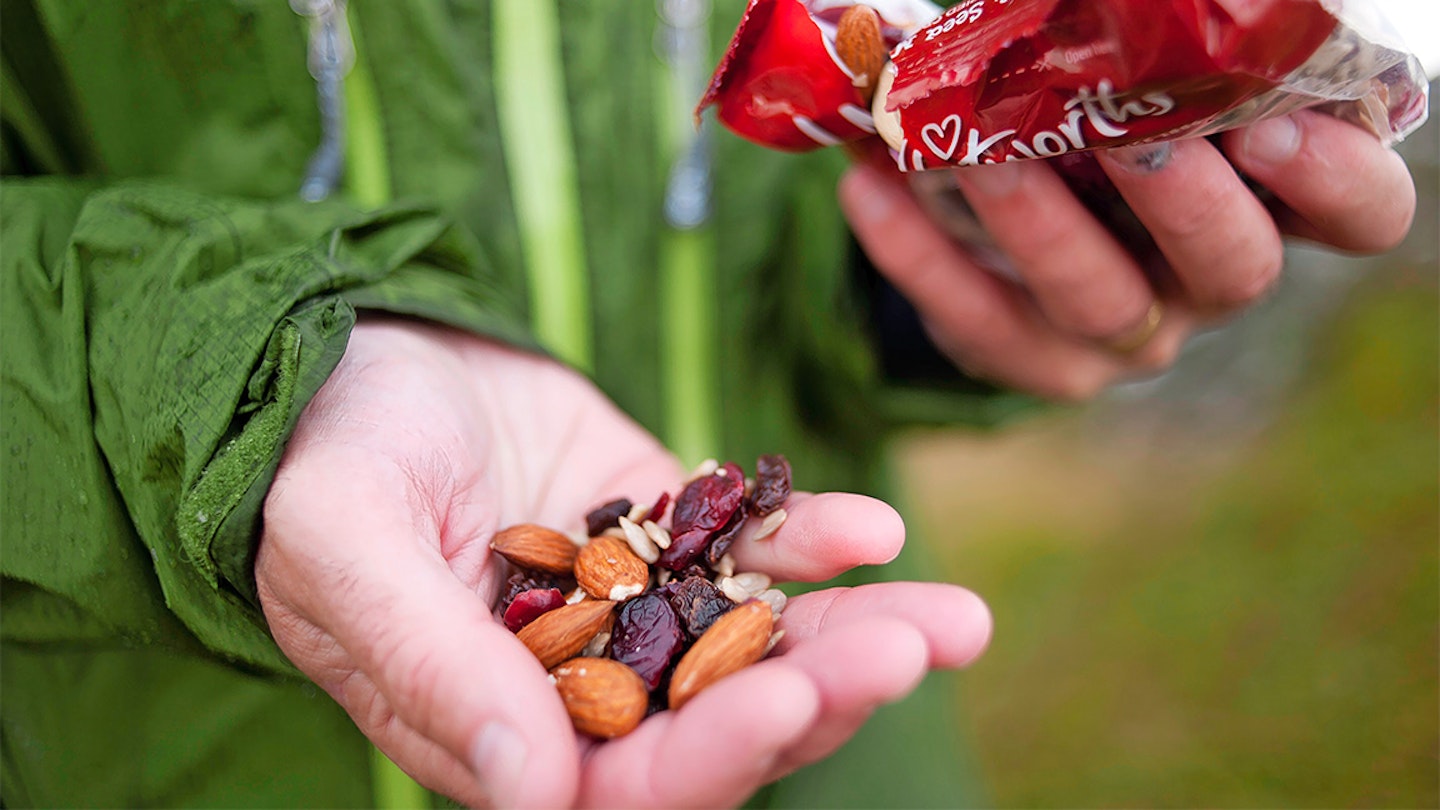
The usual trick with trail mix is to eat all the good bits out of it first, leaving behind a sad pile of peanuts and raisins - a rubbish snack when you’re really feeling the burn on mile 20. But that doesn’t mean you should abandon trail mix all together; quite the opposite in fact.
The trick, of course, is only make the trail mix yourself out of things you actually want to eat. For us, that means swerving raisins and peanuts as a base, and swapping them out instead for a plain cereal like shreddies, then augmenting the whole thing with dried cranberries, toasted hazelnuts, pecans, Galaxy minstrels, pumpkin seeds, Maltesers, and the slightest dusting of cinnamon mixed in. It’s entirely up to you as to what you want to use, but definitely think about having at least one nut, one or two different dried fruits, something sweet, and something plain but crunchy as a base.
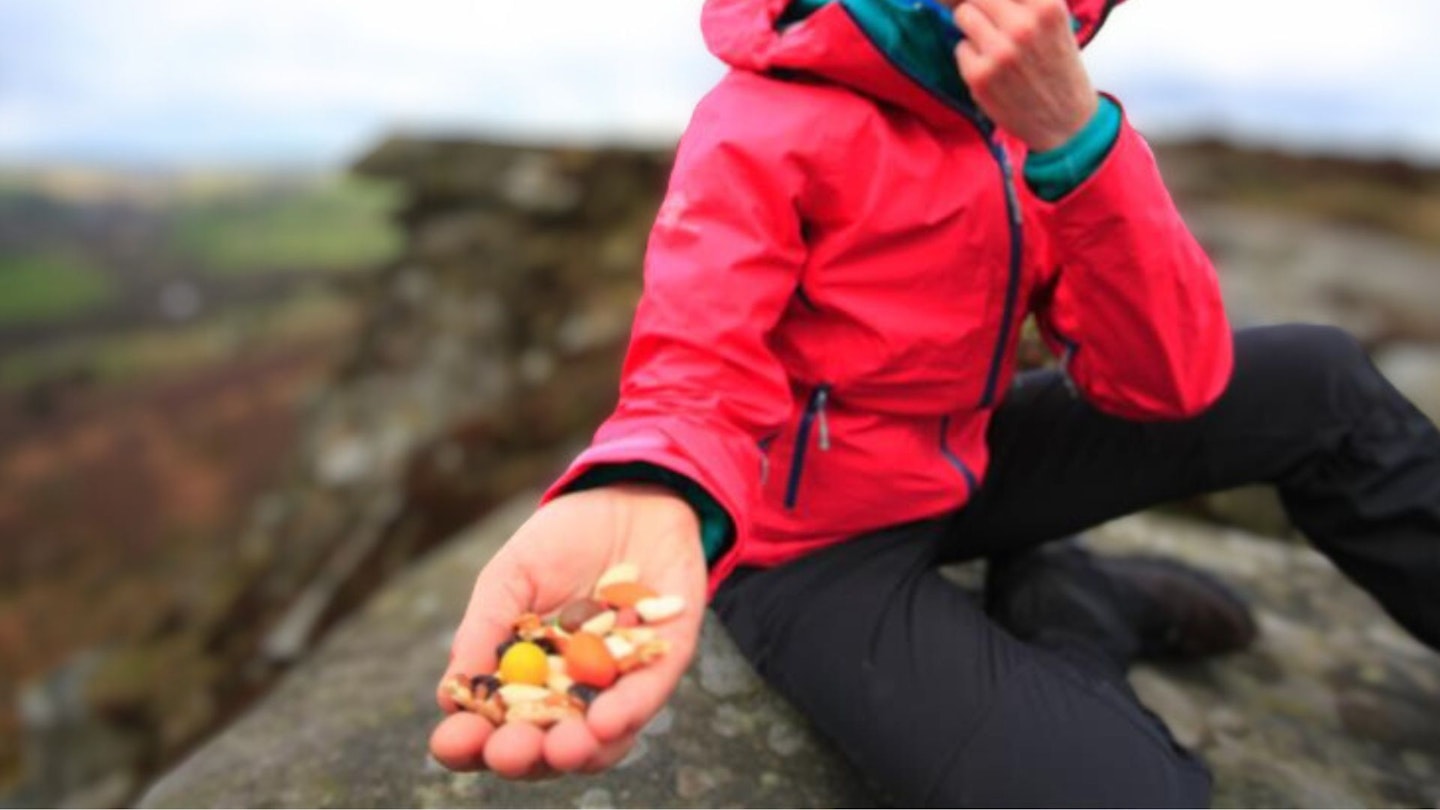
The trail mix world becomes a lot more exciting when you realise there simply are no rules - although cutting out the middle man and devouring a bag of smarties isn't really the aim of the game either. Instead, trail mix aims for a combination of slow and fast release carbs, a little bit of fat, some fibre and yes, plenty of sugar to keep it interesting. Keep that idea of balance in mind and you won’t go far wrong.
Nuts
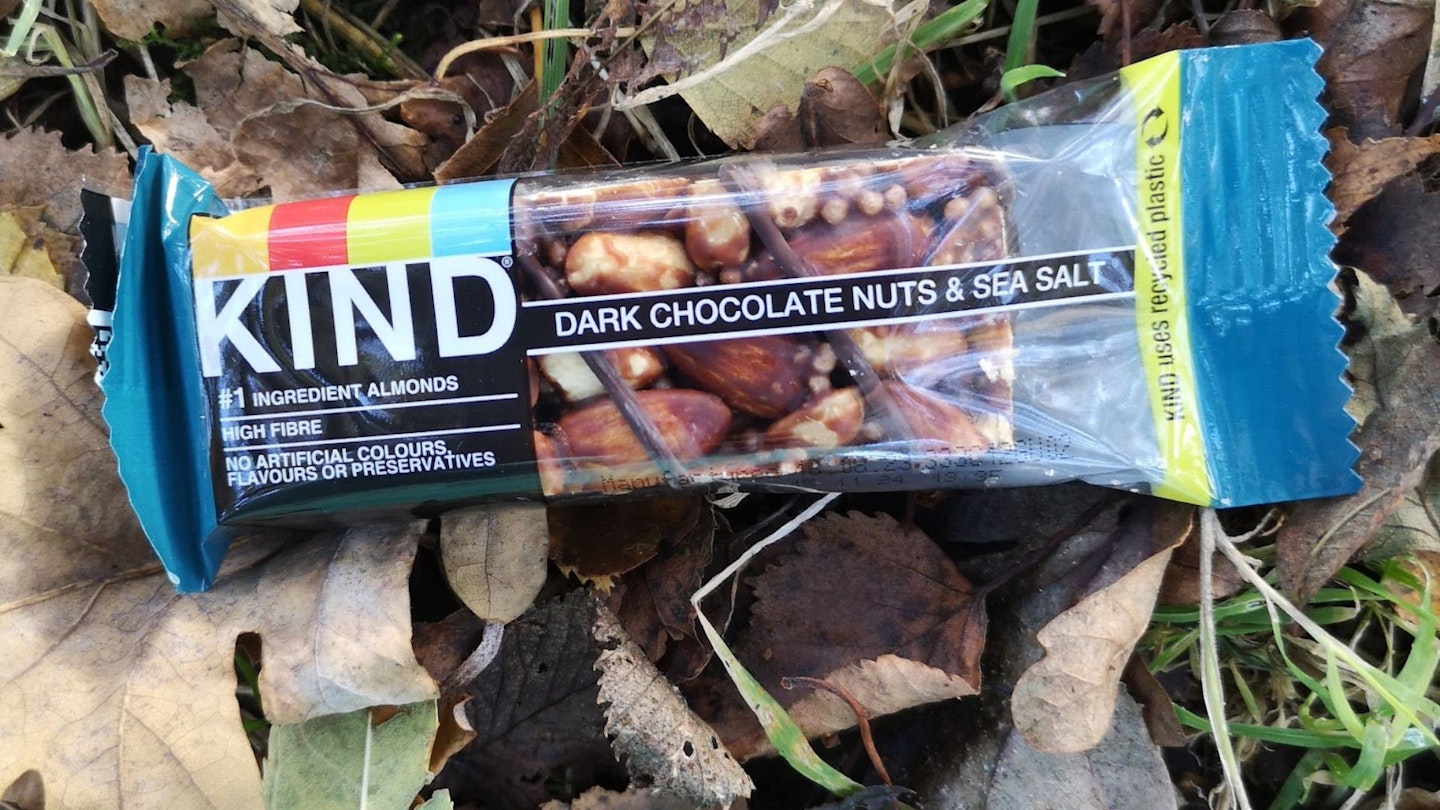
If you’re not into the idea of trail mix, plain nuts or a nut-heavy bar like KIND, are absolutely great on the hill. Nuts are high in both fat and fibre, which means you’re kept fuller for longer, and they take up surprisingly little room in the pack. Of course, KIND bars are expensive, so our favourite trick is to buy a big bag of mixed nuts and roast them up at home with honey, chilli powder and soy sauce - so you get sweet, spicy and salty all at once. Again, variety is key here and packing a mix of everything will not only keep things interesting, but keep you healthier too - nuts are high in micronutrients like magnesium and zinc.
Savoury snacks
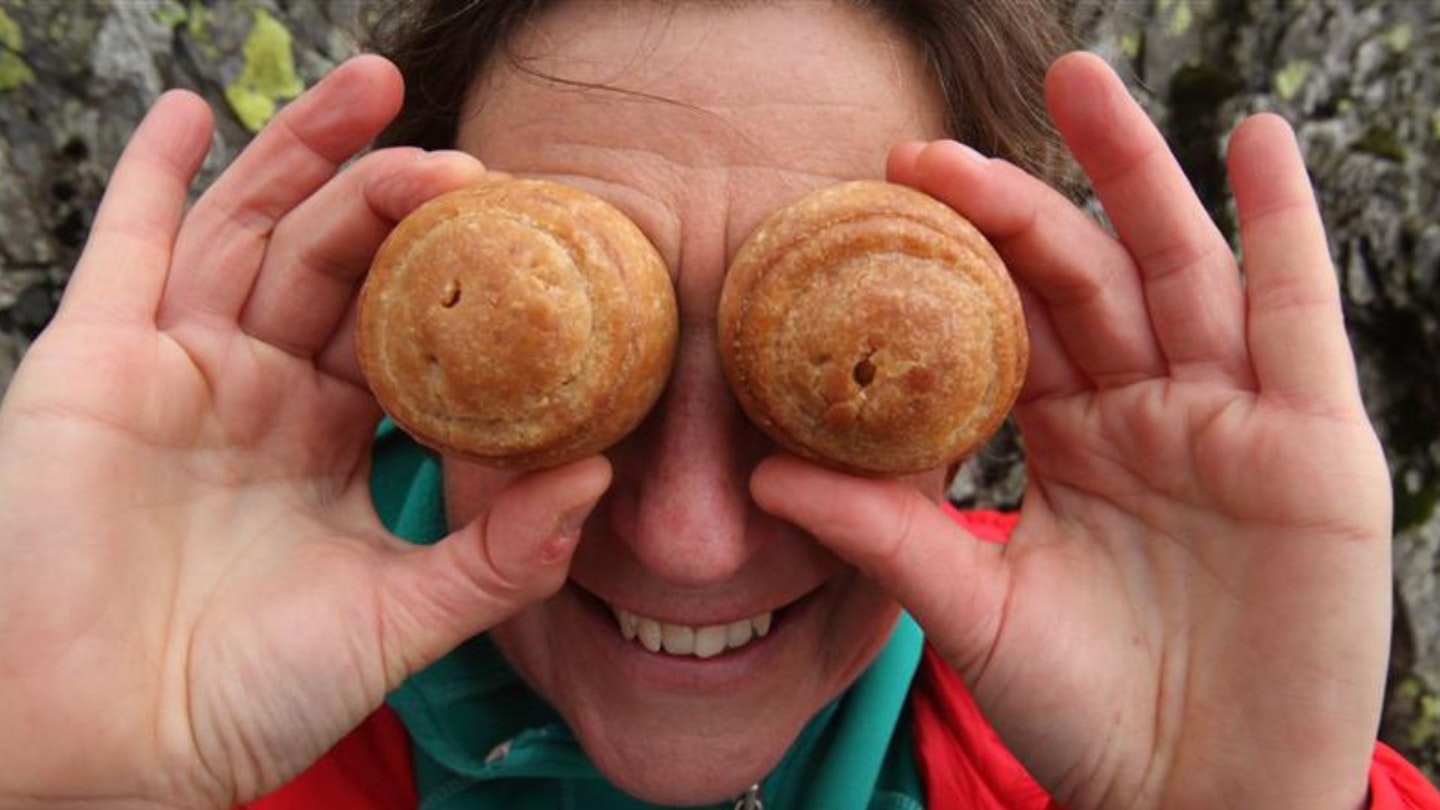
Alright, we can’t class a sandwich or a slice of cold pizza as a hiking snack (it’s definitely more like lunch) but we’ll try when it comes to things like scotch eggs, sausage rolls, mini pasties and of course, pork pies. All of the above are good, portable options for hiking in demanding conditions when sitting at the summit with a sandwich is a laughable idea.
Anything that comes wrapped in calorie dense pastry - or even better, sausage-meat - will serve you well for a bit of respite between sweeter options. These savoury options usually chill down well too, meaning they won’t break your teeth if you’re out in the winter.
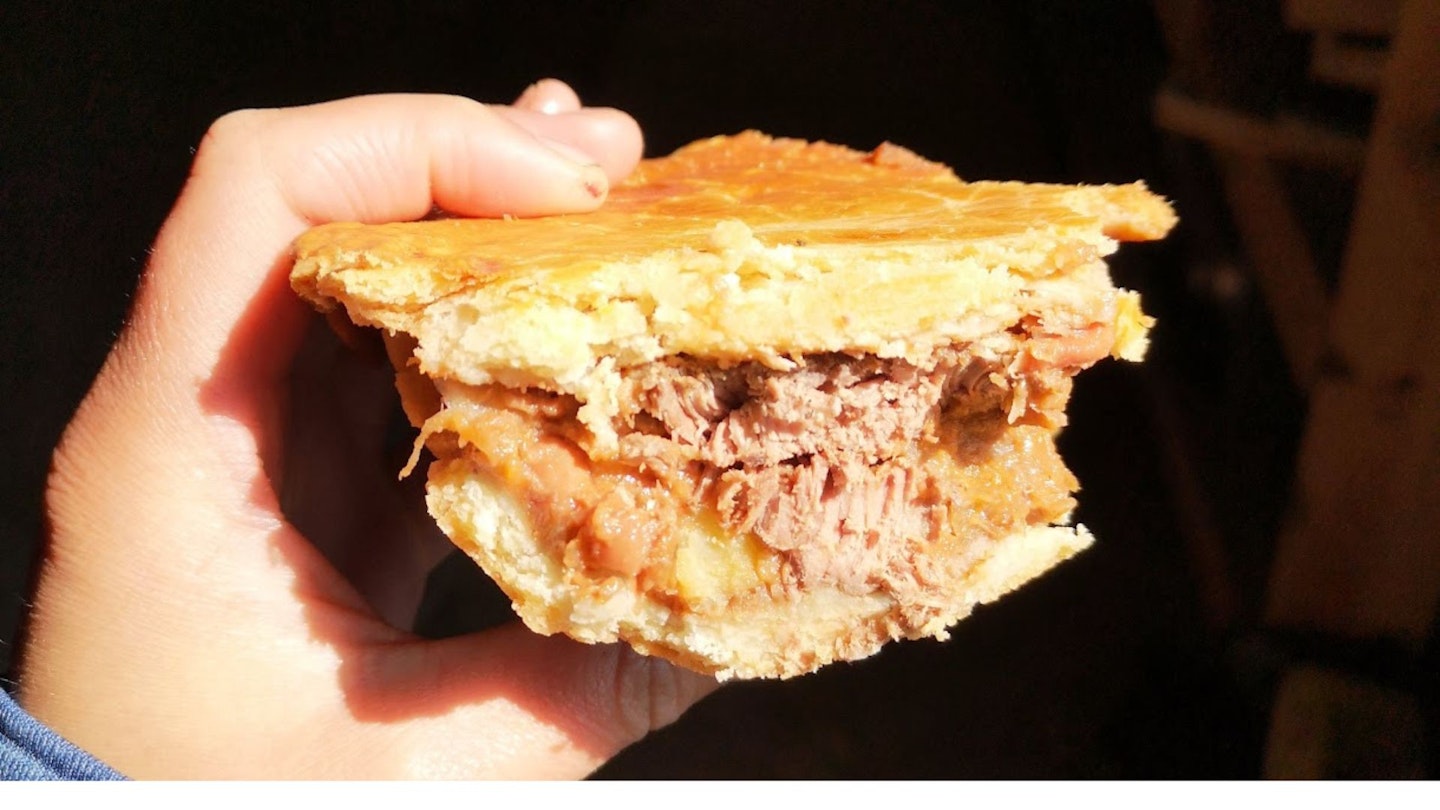
Trail editor Oli Reed would be happy to survive all day on Gregg’s sausage rolls, but we recommend limiting these types of savoury snacks to really demanding hill days, as they can often feel a little heavy on the stomach if you go overboard.
If you really want some good savoury options without the heaviness of pastry (or indeed, sausagemeat), may we suggest simply bringing with you a large chunk of your favourite cheese, a small penknife and some oatcakes? This is better suited to dry weather and a good view. Bonus points for packing a little leak-proof container of chutney. Keep it classy, Sandiego.
Dried or freeze-dried fruit
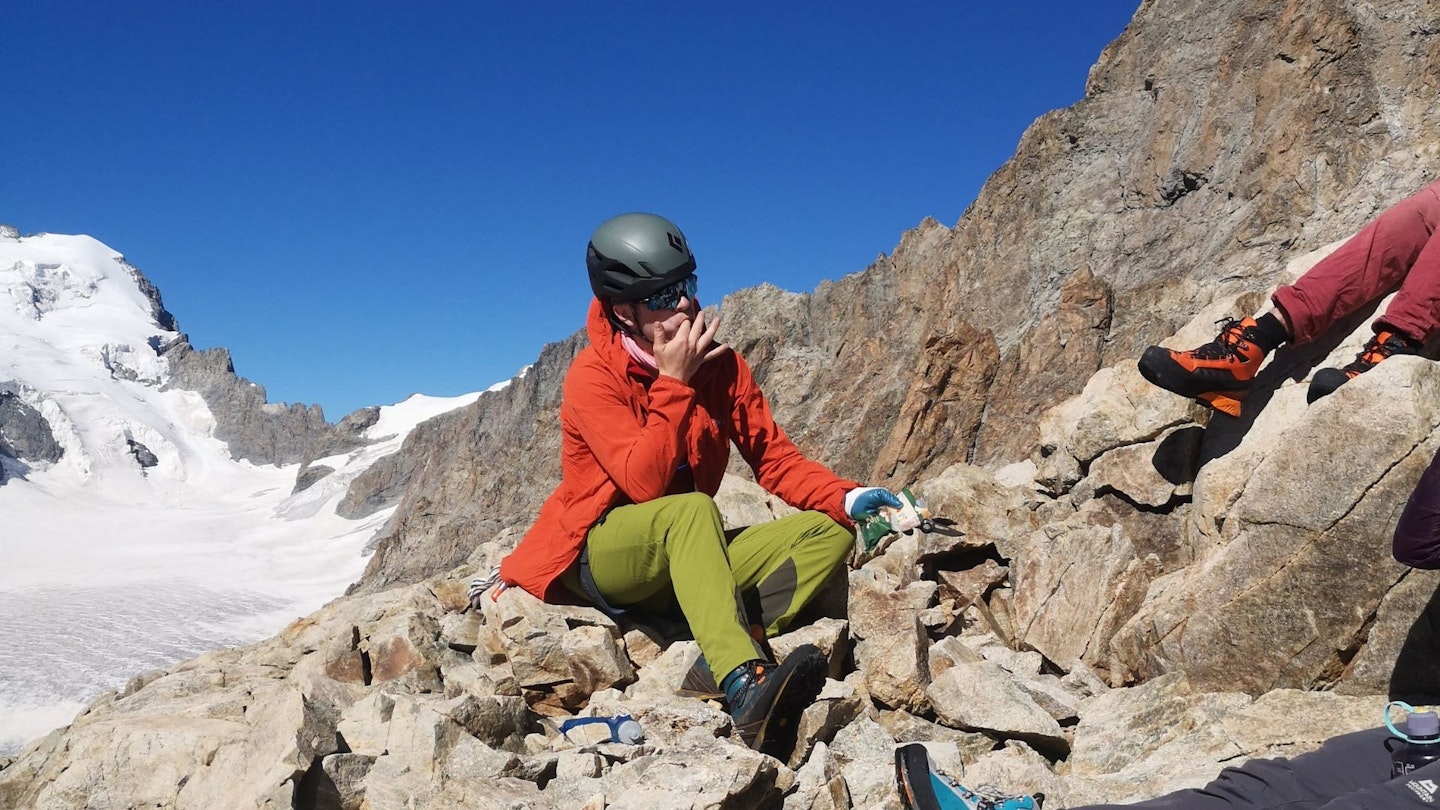
We love dried mango, dried apple or dried pineapple on a walk: it’s chewy, tangy and interesting, with the added advantage of being ludicrously high in sugar. It’s also made up of just one ingredient, which is no mean feat in today’s world of ingredient lists that are usually longer than your forearm. Of course, dried fruit has been around forever, but its younger, bolder cousin, freeze dried fruit, is a new kid on the block - and perfect for ultralight enthusiasts.
Freeze-dried fruit is the product of a preservation process where fresh fruit is rapidly frozen and then placed in a vacuum chamber. There, the frozen water content is removed through a process called sublimation, which converts the water directly from solid to gas without passing through the liquid phase. This process preserves the fruit's natural colour, flavour, and nutritional content, making for a lightweight, crunchy, and delicious snack that retains most of the original fruit's taste and nutrients. It’s a game-changer for hikers doing long-distance trails, as it weighs next to nothing. The only downside is that it’s relatively expensive to buy - but it’s getting cheaper as more and more people cotton onto the fact it’s a great way to preserve fruit that would otherwise go to waste.
What about other fruit or vegetables?

While we’re on the topic of fruit - fresh fruit is a bit of a no go for lots of the team at Trail and LFTO. It’s heavy, bulky and not particularly calorically dense. Bananas are the exception, as they do deliver a good carb load. However, even with those, you’re still stuck with the other problem of taking fruit with you: it’s often ecologically irresponsible to dispose of peel and cores in the UK’s wilderness, meaning you have to take back all of your flotsam and jetsam, which is annoying, and in the case of banana peels, kind of icky. We say leave the fruit at home and veg out when you get there. If you do want something fresh and crunchy on the trail, take a carrot, sugar snap peas, or some baby corn.
Chocolate bars, biscuits or sweets

Many new hikers make the mistake of only packing chocolate bars, biscuits and sweets for their day ahead - and while we love a mid-bog curly-wurly, high sugar snacks aren’t gonna cut it for the 6-8 hours you’re out and about. The reason? They give you a big insulin spike, that then when it wears off again, it makes you hungry, meaning you reach for another chocolate bar. Doing this all day will leave you, counterintuitively, more depleted than before - not to mention the fact that sweets and chocolate are low in nutrients and fibre.
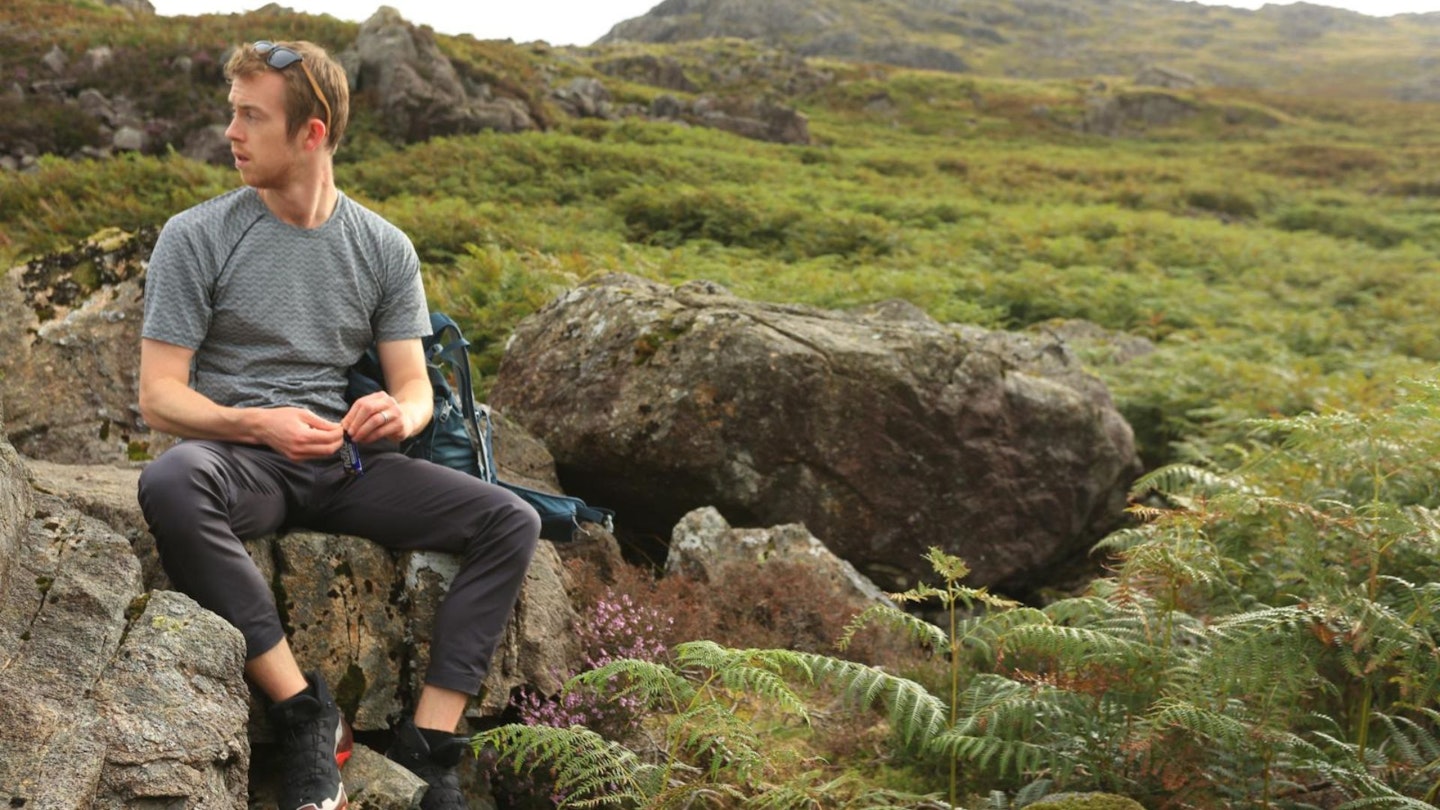
That said, we LOVE to have something sweet on hand for those moments where spirits are low and muscles are tiring. Something tangy and fizzy - Haribo tangfastics, or space bacon (otherwise known as rainbow belts) are go-tos, but something like jelly babies or fruit pastilles work well too. The things we’d avoid here are hard boiled sweets, which can go very sticky in damp weather, and also pose a choking hazard if you’re walking and eating at the same time.
As for biscuits, anything goes really - we love the crunch of gingernuts, the oatiness of hobnobs and the zingy middle of Jaffa Cakes (jury's out on whether they're cake or a biscuit). And when it comes to chocolate bars, we reckon you can’t do much better than a snickers. There’s peanuts, caramel, nougat and chocolate: what’s not to love? We do also love a Crunchie, and a good old plain bar of milk chocolate here. The only thing of course, with chocolate is to keep it for when the temperature is still below 20 degrees c - getting chocolate out of goretex isn’t a fun task. Ask us how we know.
Important things to consider when choosing what to snack on
1. Nutritional Value
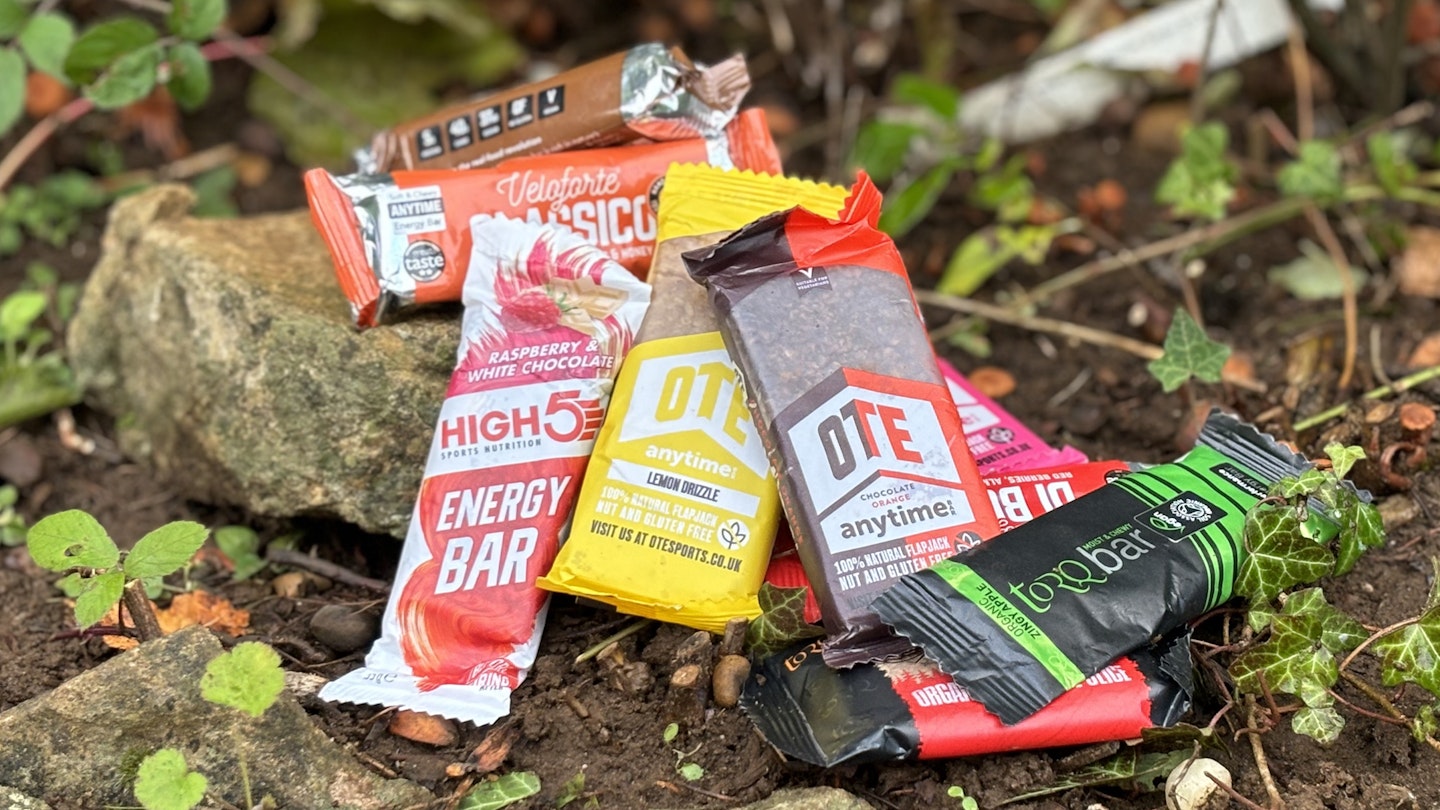
Getting the right balance of nutrition is important, especially over longer hikes, and on overnight ventures. Opt for snacks that provide sustained energy, including a balance of slow and fast release carbohydrates (that’s both grains and simple sugars), protein, fibre and healthy fats. Primarily, you should look for whole food ingredients to keep you fuelled and satisfied, but don't be afraid to treat yourself to less healthy options too.
2. Portability
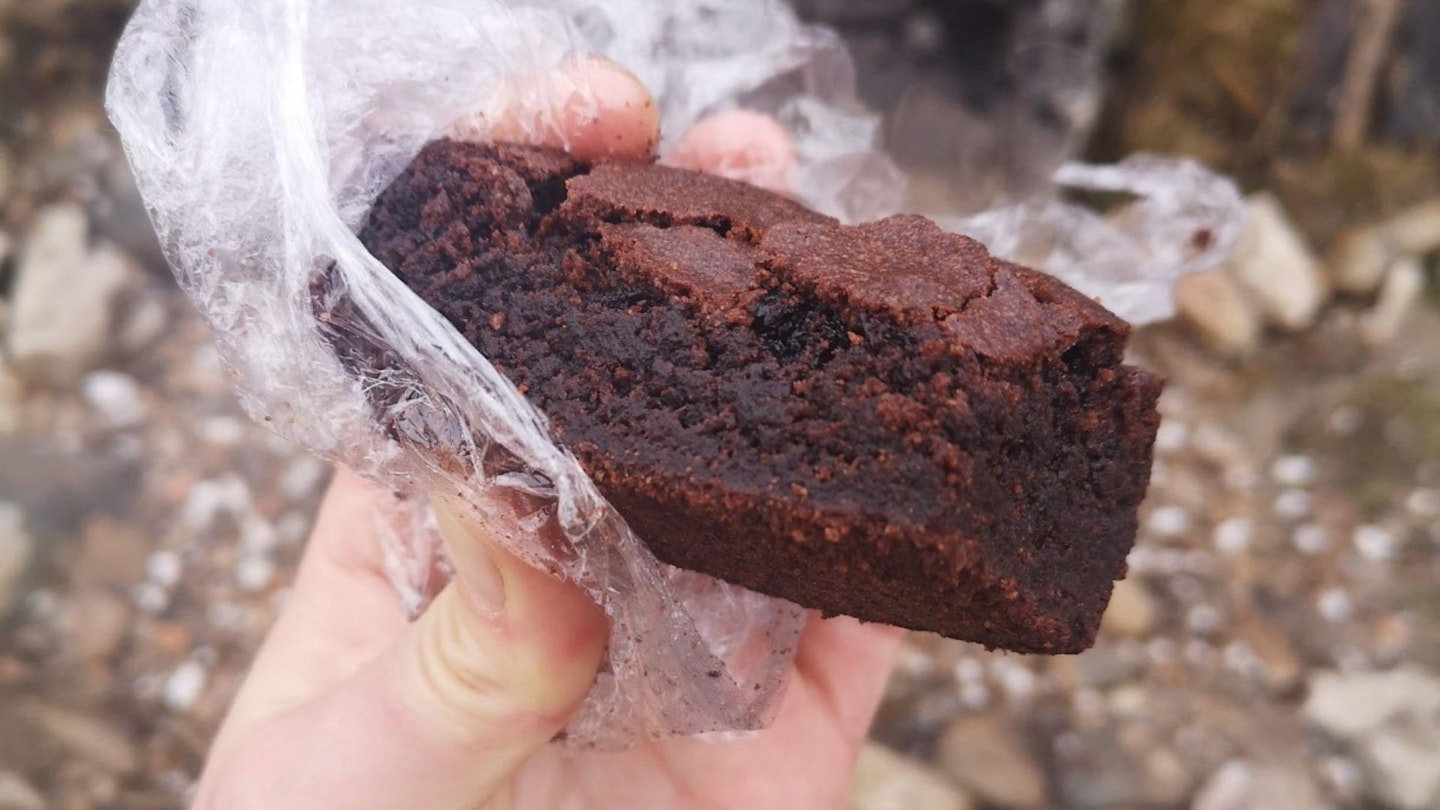
Ditch the fruit, popcorn and bagged salad - and get rid of that bulky tupperware while you’re at it. Making sure you pack efficiently is key for a more comfortable hike, so choose snacks that have good energy density per gram, that are compact, and easy to pack. Individual packaging or resealable bags can also be convenient for portion control and keeping your pack organised, but don’t bother bringing the cardboard sleeves which bars or packets come in. If you're going for a homemade treat, fruitcake is great, but an even better bet is something really dense like a brownie or rocky road.
3. Longevity

Pick snacks with a long shelf life that won't spoil quickly, especially if you're hiking for multiple days or in varying weather conditions. Note: hummus goes fizzy in hot weather. Resistance to melting or crumbling are also important considerations: it’s why bananas are such a risky food, chocolate doesn’t work in summer and you eat the shortbread you packed first rather than leaving it to eat the end of the trip.
4. Convenience
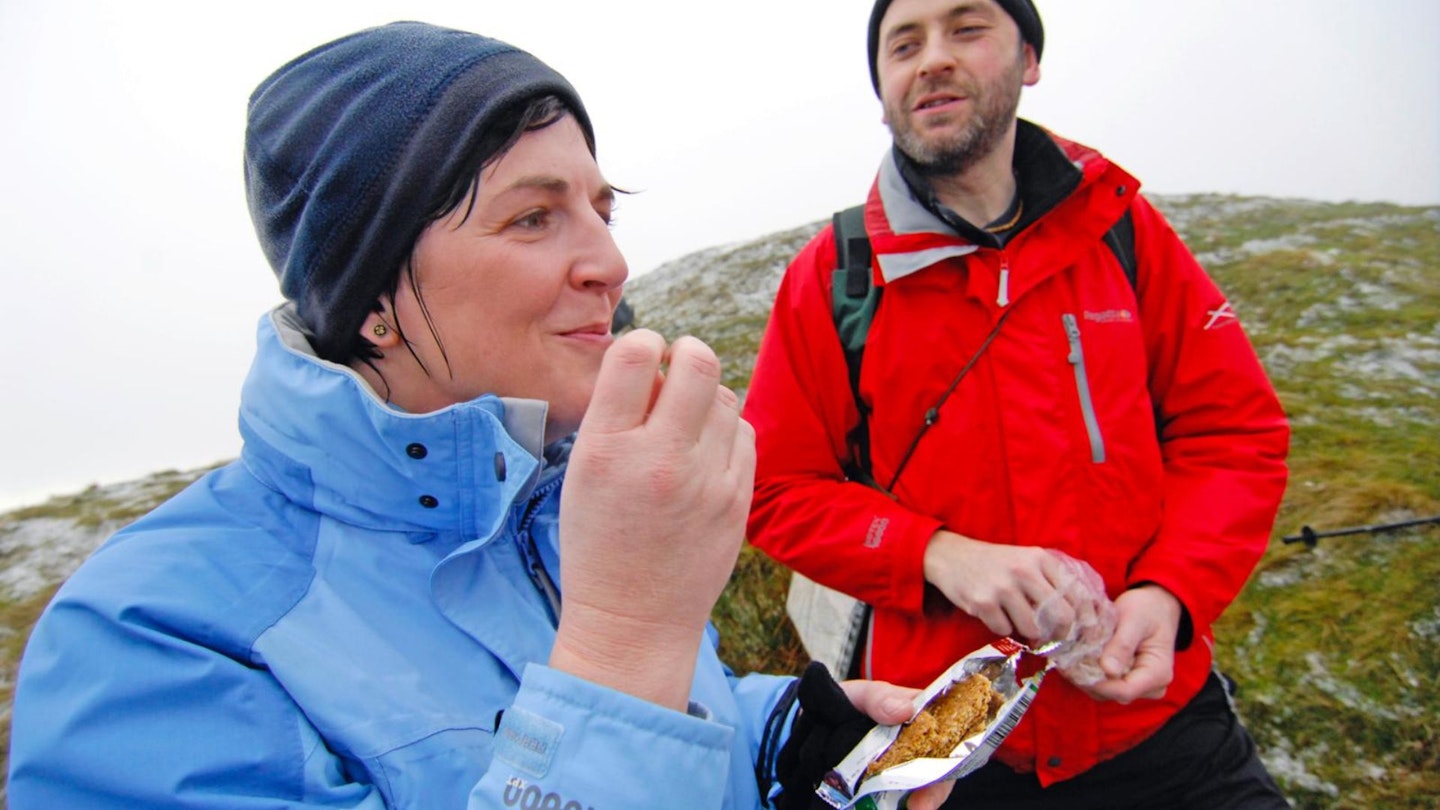
Opt for snacks that require minimal preparation and are easy to eat on the trail. Avoid snacks that are messy (yogurts, protein pots, an avocado) or require utensils - unless you're willing to carry them with you. The exception we make to this rule, every time, is tinned fish. We love the filling protein hit you get and are happy to pack both a spork to eat it with, and then carry out the tin using a two spare dog-poo bags - double wrapped for peace of mind.
4. Taste and enjoyment
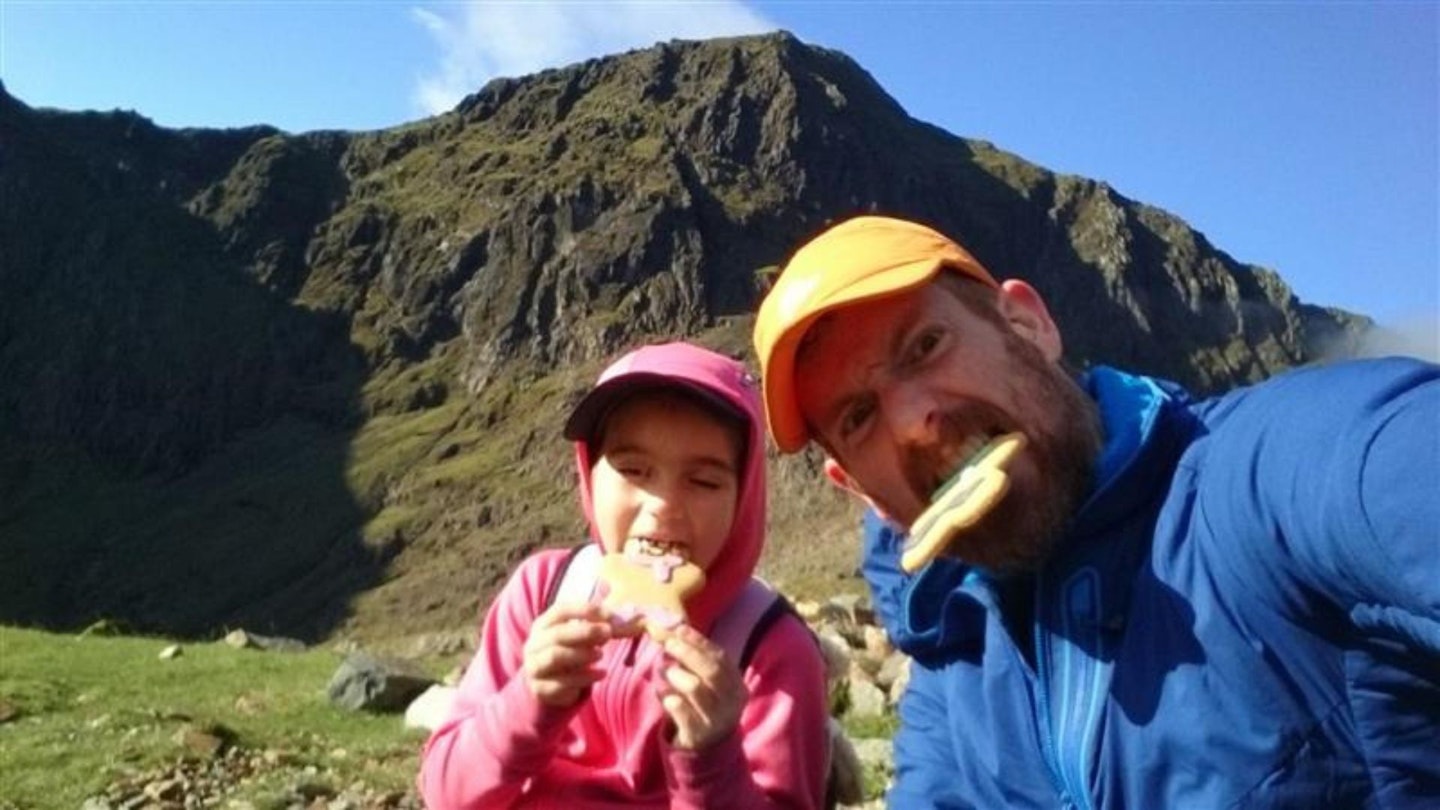
Above all, it’s important to choose snacks that you genuinely enjoy eating. Not only will this boost morale and keep you motivated during your hike, it’ll mean you’re getting the right nutrition too. Experiment with different brands of bars, and try a touch of home baking to see what suits you best. And if all that fails, just pack an army of gingerbread men and a nice bit of cheese.
About the author(s)

This article was compiled by Fliss Freeborn (above), who before working for LFTO, was a professional food writer specialising in outdoor cookery and nutrition. She was helped along by the rest of the team at Trail and LFTO, who gave their recommendations on what they've been taking with them to eat over the years. Fliss is passionate about never eating badly outside, and campaigns voraciously for the end of cruelty to camping meals.
